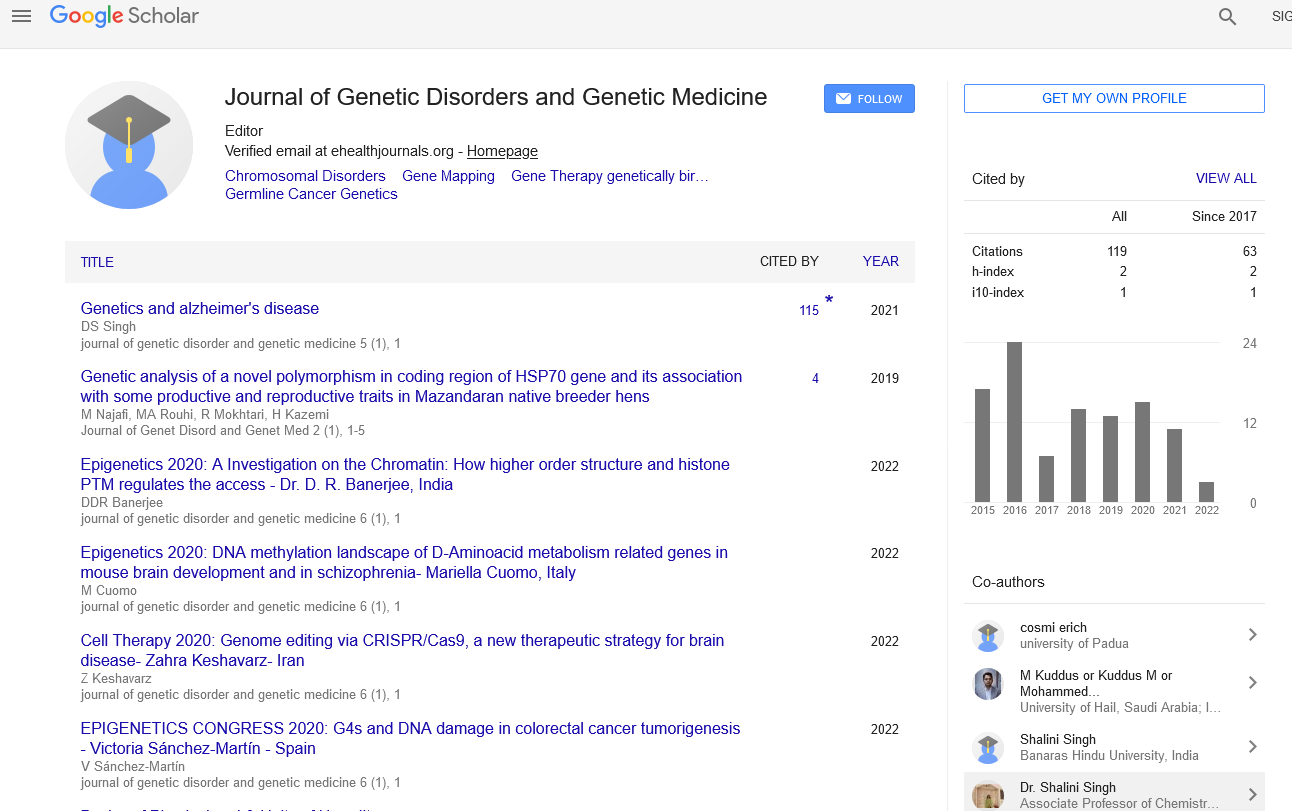
Sign up for email alert when new content gets added: Sign up
Abstract
G4s and DNA damage in colorectal cancer tumorigenesis
Author(s): Victoria Sánchez-MartÃn*Non-canonical four-stranded G-quadruplex (G4) structures form through self-recognition of guanines into stacked tetrads within Biography Victoria is a third-year PhD student financed with “Fellowship for Training of University Teaching Staff” from Spanish Government at Centre for Genomics and Oncological Research, Spain. Her doctoral thesis is focused on studying the evolution of DNA G-quadruplexes throughout colorectal carcinogenesis and the use of G-quadruplexes ligands as a new therapeutic approach. She was enrolled in cancer research since an undergraduate student thanks to she was awarded with both national and international competitive fellowships. To date, she has published three papers in reputed journals. chromatin DNA. Considerable evidences exist for G4s formation in vitro and have linked G4 formation with key biological processes ranging from transcription and translation to genome instability and cancer. Despite of G4s play an important role in telomere maintenance and expression control of several oncogenes and tumor suppressors, G4s have not been exploited in colorectal cancer (CRC), the third most common tumor. Our aim was to assess G4s as therapeutic targets in CRC tumorigenesis and their association with DNA damage. We have measured the presence of G4s and DNA damage at G0/G1 and S phase by immunofluorescence and Fiji quantification (N > 200) using antibodies against G4s (termed BG4) and gH2AX respectively in a cellular model of CRC. Further colocalization analysis by Pearson correlation coefficient (PCC) was performed using EzColocalization plugin (N > 250). As result, non-tumoral epithelial cells showed the lowest G4 and gH2AX levels, which significantly increased in CRC. Although G4s and gH2AX levels were positively correlated, PCC analysis established that BG4 and gH2AX signals did not colocalize. In conclusion, G4s increased along CRC progression, suggesting a role for G4s in CRC tumorigenesis. The typical genome instability in CRC is only partially explained by G4s presence. Subsequent studies are required to evaluate the therapeutic potential of G4s in CRC.




